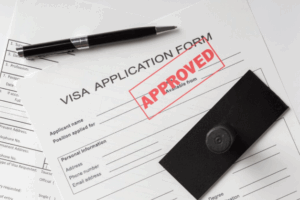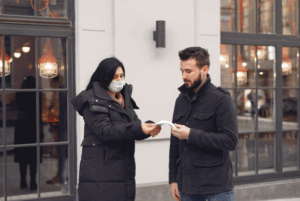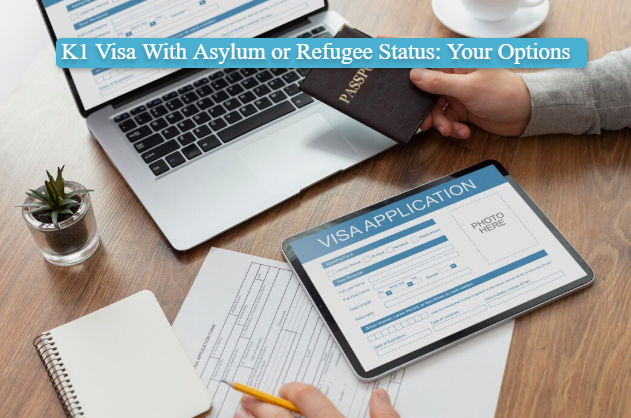K1 Visa For Refugees Or Asylum Seekers: Is It Possible
At Passage Immigration Law, we have met couples in almost every situation. A US citizen falls in love with someone who fled home and is now rebuilding life as a refugee abroad. An asylum seeker inside the United States gets engaged and wants a clear plan to marry and live together. The first question is always the same, “Can we use a K1 Fiancé Visa?” The short answer is that K1 is a very specific path. It works in some cases, but not in others. This guide explains where K1 fits, where it does not, and what real alternatives exist so you can protect your future together.
We will keep things simple and practical. By the end, you should understand how K1 interacts with asylum and refugee paths, and how to move from engagement to a green card with fewer surprises.
Why This Topic Creates Confusion
- K1 is designed only for fiancés of US citizens who are outside the United States and plan to enter to marry within 90 days.
- Asylum and refugee programs follow different rules and timelines from family visas.
- Pending asylum is not the same as a regular non-immigrant status, which matters when deciding if you can file for adjustment of status for permanent residence inside the country.
- Leaving the United States to try K1 can be risky if you have an unlawful presence or an open asylum case.
Our goal is to help you avoid the wrong turn and choose a path that actually matches your case.
When K1 Can Work

K1 can be a good fit when the foreign fiancé is outside the United States, is free to marry, and can safely obtain travel documents. The US petitioner must be a US citizen. You must both intend to marry within 90 days of entry and then apply for a green card inside the United States.
Green flags for K1
- The fiancé is abroad with no reentry bars and can attend a consular interview. This is common when the partner is part of the family of refugees abroad and has valid travel documents.
- There is a valid passport or an accepted travel document that satisfies the K1 visa required documents at the interview.
- Security checks and personal history do not present obvious visa ineligibilities.
- The couple is prepared for a period after arrival with no travel and limited work permission until the K1 adjustment of status case is filed.
What to prepare early
- Clean relationship timeline, proof you met in person within the last two years, and intent to marry within 90 days.
- Basic civil documents and police certificates as the consulate requires.
- A realistic budget for filing fees and medical exams.
When K1 Does Not Fit
K1 is usually not the answer if the fiancé is already inside the United States on a pending asylum case or without status. In that case, a K1 would require departure for consular processing, which can trigger bars and break the asylum process. If you are already married, a K1 does not apply. Married couples use spousal visas.
Red flags for K1
- The fiancé is physically in the United States with a pending asylum case and is asking, “Can an asylum seeker marry a US citizen and file inside?”
- There is a past unlawful presence that would trigger a bar upon departure.
- The couple is already married in a civil or religious ceremony.
- The beneficiary has refugee or asylee status and is on a path that already supports those who are eligible for family reunification in the USA through refugee programs.
When K1 does not fit, do not force it. Other routes are safer and cleaner for your situation.
If Your Partner Is A Refugee Abroad
If your partner has refugee status abroad, the next step depends on your timeline and risk tolerance. Some refugees can still pursue a K1 if they meet the rules, have valid documents, and can clear security screening. Others may be better served by refugee family reunification programs or by marrying and pursuing a spousal visa.
Questions to discuss
- Can your partner obtain a passport or an acceptable travel document for a K1 interview and travel? If not, explore vetted visas for refugees and any refugee visa USA options available in that region.
- Are there safer family reunion options through refugee programs that keep risk and travel to a minimum for the family of refugees?
- Would a legally recognized marriage support a stronger spousal case with fewer unknowns compared with a K-1 visa application?
This is not one size fits all. Choose the option that balances speed, safety, and documentation.
If Your Partner Is An Asylum Seeker Inside The United States

Many readers ask, “Can an asylum seeker marry a US citizen?” Yes. Marriage itself is allowed. The next question is about paperwork. If you marry, the next step is to test whether you can file a marriage-based case inside the United States or whether you must use consular processing with a waiver.
Key points to evaluate
- Entry history and whether there was an admission or parole at the border, which affects the adjustment of status family-based filings.
- Criminal or immigration history that could block the USA adjustment of status.
- The timeline for the asylum case and any court hearings for an asylum seeker married to a US citizen.
- Risks of leaving the United States while cases are pending.
There are clean cases where a spouse can file inside the country. There are also cases where leaving would cause more harm than good. This is where a tailored plan matters.
Can Asylum Seekers Get a Green Card
Another common question is, “Can asylum seekers can get a green card?” Yes, many people with approved asylum can apply for a green card after they meet the waiting period and other requirements for a green card application for refugee or asylee status. If your asylum case is still pending, marriage to a US citizen may offer a separate path if you qualify to adjust inside the country. If asylum is denied, the options change, but there can still be routes forward based on marriage or other relief. The right path depends on timing, entry, and any prior orders.
Practical steps
- Track where your asylum case sits today and what the next milestone is, especially if you are an asylum seeker married to a US citizen considering filing.
- If you plan to marry, plan the filing sequence so the cases do not conflict and you do not leave during the US visa for refugee or asylum processing.
- Keep copies of every receipt and notice so your new case can reference the old one accurately.
The goal is to avoid conflicts and keep your status transitions smooth.
Book Your Strategy Session With Passage Immigration Law
Ready to pick a path that fits your life. Schedule a consultation with Passage Immigration Law. We will review your history, answer the hard questions about K1 and marriage-based filings, and build a simple plan from engagement to green card without avoidable risk.
Disclaimer: This article offers general legal information, not legal advice. Do not rely upon this information without seeking legal counsel. If you need legal advice, you may contact us directly to speak with an attorney. We disclaim all liability with respect to actions taken based on any information presented. Every case is different, and outcomes will vary depending on the unique facts and legal issues of your case.







